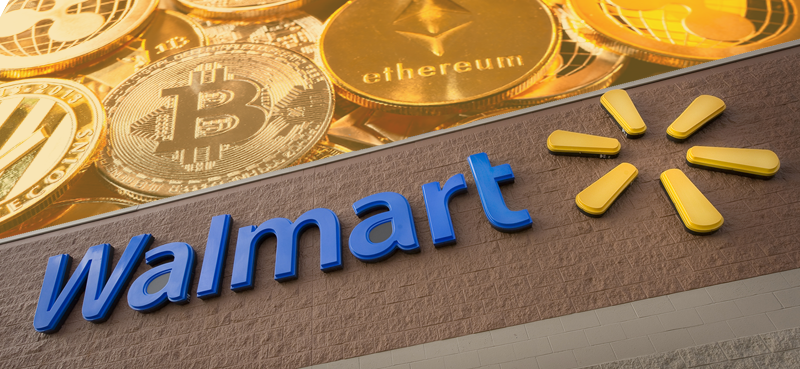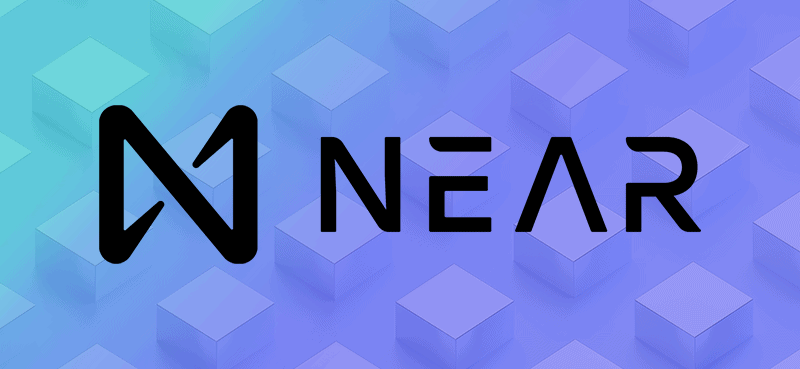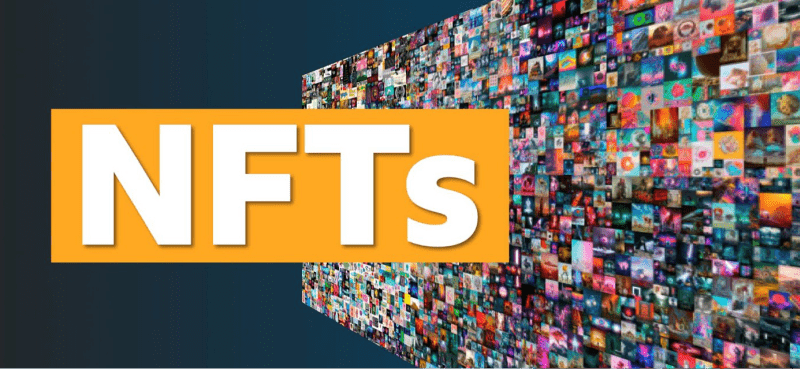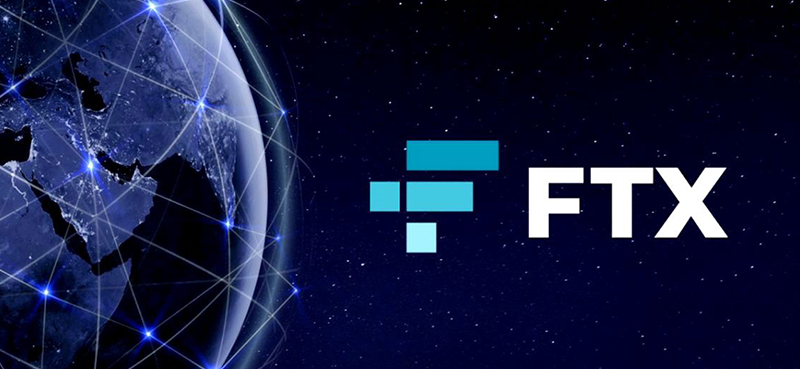Tech giant Meta Platforms (META) made headlines last week when it reported disappointing earnings for the second quarter in a row, triggering a 25% one-day plunge in its stock price. Shares are now sitting at their lowest level since 2016.
The company’s revenue declined to $27.7 billion—down 4% compared to a year ago… and just slightly above analysts’ estimates. But the bigger problem was the incredible 52% drop in profits, which fell to $4.4 billion from $9.2 billion during the third quarter (Q3) of 2021.
The ugly numbers are largely a result of Apple’s new privacy update, a slowing ad market, and a declining market share (especially vs. TikTok).
The other big culprit is Meta’s Reality Labs division, which is responsible for projects involving virtual and augmented reality… and the creation of Meta’s metaverse.
For Q3, this business generated a loss of $3.7 billion, accounting for most of the big plunge in Meta’s earnings. And if you add the losses from the previous two quarters, the Reality Labs unit has lost a whopping $9.4 billion so far in 2022.
Meta’s awful quarter—and the 25% plunge in its share price—generated a ton of headlines last week. And plenty of folks are pointing fingers at the metaverse project as a massive failure… despite the fact it’s still in the early stages of development.
But Meta’s results only represent a problem with its own metaverse… not the entire space.
For example, Roblox (RBLX), which runs its own metaverse-style video game, is widely viewed as one of the early leaders in the metaverse space.
Two months ago, Roblox reported earnings that blew out analysts’ estimates… as revenue of $591 million surged 30% vs. a year ago.
More importantly, Roblox’s average daily active users grew to over 52 million, an increase of 21% over the past 12 months. And Roblox’s users spent a total of 11.3 billion hours on the platform—an increase of 16% compared to the same period last year.
In short, Roblox’s results show more users spending time in its online world… which is driving massive revenue growth for the company. It’s a clear sign that the metaverse model works… and there’s still plenty of room for growth.
The long-term future of the metaverse
There’s no denying that Meta is struggling. And its metaverse project might turn out to be a total flop.
Meta is the biggest and most well-known company trying to build its own version of the metaverse… so it’s no surprise the financial media will use it as the poster child for the trend.
But I’ve been skeptical about Meta’s approach: It’s focusing on building a “closed” metaverse. In other words, its virtual world will be a self-contained ecosystem that will be difficult—or even impossible—for other virtual worlds to connect to. Its users will be confined to Meta’s strictly defined environment.
Meta might still succeed. But the likely winners will be the companies that embrace open environments, which give users more freedom… and incentivize developers to be more creative. (For instance, while Roblox’s metaverse-style game is currently “closed,” it plans to transition to a fully “open” platform within a few years.)
Aside from a few players like Roblox, Decentraland, and Sandbox, the metaverse is still in the early stages of development. And no one knows what the most popular virtual worlds will be… even 5–10 years down the road.
But the long-term opportunity is massive. For example, analysts at Citigroup forecast the metaverse economy reaching $13 trillion as early as 2030. And Citi isn’t alone… Researchers at Goldman Sachs predict that the total metaverse ecosystem could be worth $8 trillion within a decade.
More importantly, hundreds of billions of dollars are flowing into this trend.
The world’s top venture capital (VC) firm, Andreessen Horowtiz, recently launched a $600 million metaverse fund.
In fact, Curzio Research purchased $5 million worth of land in TCG World earlier this year. TCG World is designed to be an open metaverse… and it’s on track to launch by the end of this year. To learn more about TCG World, check out Frank’s recent interview with CEO David Evans.
Put simply, hundreds of companies are still in the early stages of building different metaverses. It will take a few more years to see which ones succeed… and which ones will fail. So don’t let Meta’s ugly results distract you from the big, long-term picture for the trend.
NFTs are coming to Twitter
Twitter just announced that its users will be able to buy and sell NFTs through tweets…
The feature is still in testing mode, with Twitter saying it will be called “NFT Tweet Tiles.”
The social media giant didn’t give a specific date for a full-scale launch, but it’s working out the details with four new partners—established NFT marketplaces Magic Eden, Rarible, Dapper Labs, and Jump.Trade.
Twitter chose to partner with these marketplaces for several reasons… For one thing, these marketplaces offer NFTs that use a handful of different blockchains, including Ethereum, Polygon, Solana, Tezos, and others. The main focus is to create a diverse NFT ecosystem using these blockchains to help cut down transaction costs while providing faster, more secure transactions.
Based on the early glimpse of Tweet Tiles, the feature will be simple… just like buying NFTs on a marketplace. Users can see which NFTs are for sale… and after pressing on the tweet of the desired artwork, a clickable button will allow the user to view the NFT on whichever marketplace it’s trading on.
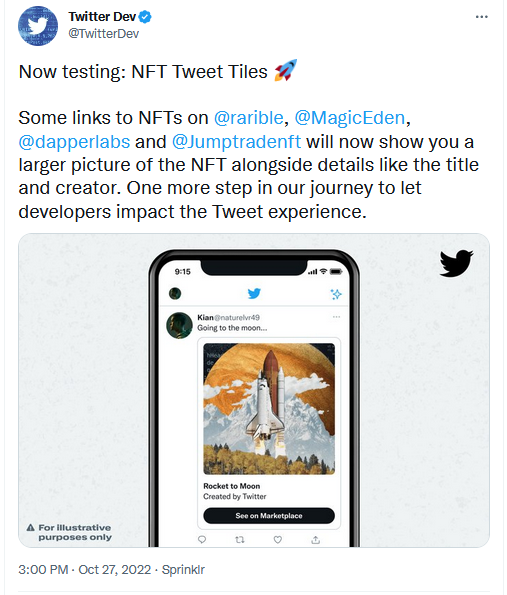
Widespread NFT adoption is coming
Twitter’s push into NFTs is a huge step forward for the entire industry…
Twitter is home to over 206 million users… which means millions of people will be able to buy and sell NFTs across its new partnered marketplaces.
Put simply, Twitter’s new feature will accelerate public adoption of NFTs. It’s an easy way for users to buy (and show off) their favorite artwork… while keeping tabs on the most popular NFT collections.
It will be much easier for everyday users to get involved in the space… and we’ll likely see a surge in NFT sales once the feature launches.
As a sidenote, I’m surprised by the announcement… It’s a bit of a curveball in the midst of Elon Musk’s purchase of the company. I’m also shocked that OpenSea—the largest NFT marketplace by sales volume—isn’t involved.
I’ll be watching Twitter’s progress as it launches its new NFT feature. I want to see if it brings on more partners… and which wallets will be compatible with the NFTs from its marketplaces.
But no matter what happens, we’ll likely see other social media platforms follow in Twitter’s footsteps… opening the NFT market to millions of new users.
Editor’s note:
As the crypto market starts rebounding, you’re going to want cash in hand to take advantage of the incredible bargains in this sector…
And right now, the Moneyflow Trader strategy is generating staggering returns… often in weeks.
Go here to see how it works… and take advantage of Frank’s incredible “market crash” discount.







